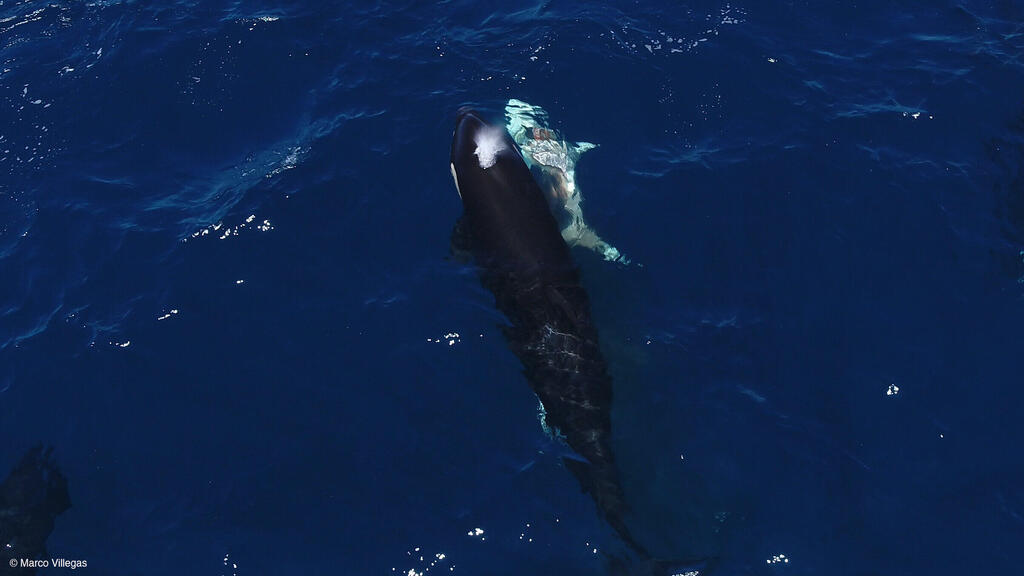The great white shark (Carcharodon carcharias), long regarded as the ocean’s most fearsome predator, has now been shown to have predators of its own. A pod of killer whales (Orcinus orca)—known as orcas—was observed in the Gulf of California in two separate incidents using the region’s warming waters to their advantage.
While orcas are known to hunt great whites in places like South Africa and Australia, sightings of such behavior in the northeastern Pacific are rare. The pod, named Moctezuma after one of its most recognizable members who made headlines last year for killing a whale shark, appeared to target young, inexperienced great whites.
Killer whales attacking great white sharks
(Video: Jesús Erick Higuera Rivas)


The observations, made in 2020 and 2022, suggest that orcas may hunt great white sharks more frequently than previously believed.
“I believe orcas that feed on gill-breathing fish—members of the cartilaginous fish class—can eat great whites anywhere they choose,” said marine biologist Jesús Eric Higuera-Rivas, director of the nonprofit research group Conexiones Terramar, which led the study published in Frontiers in Marine Science. “This behavior is evidence of the orca’s advanced intelligence, strategic thinking, and social learning, as hunting techniques are passed down through generations.”
4 View gallery


A wounded great white shark next to a killer whale
(Photo: Marco Villegas Martínez)
During both documented events, three great white sharks were killed while researchers were monitoring the orcas. The team identified each whale involved based on distinctive physical traits.
In August 2020, five orcas were seen chasing a young great white, forcing it toward the surface before flipping it upside down. They dragged it underwater and resurfaced moments later carrying the shark’s liver in their mouths. Shortly after, they repeated the same maneuver on another young shark.
Two years later, in August 2022, researchers recorded the same pattern: five orcas flipped a juvenile great white onto its back. The shark began bleeding from its gills, and the whales consumed its liver.
The inversion of the sharks was no accident. Flipping a shark on its back induces a state of tonic immobility, temporarily paralyzing it and leaving it defenseless. This allowed the orcas to easily extract and eat the liver—a nutrient-rich organ prized by many marine predators.
Scientists believe the orcas have refined this technique to reduce the risk of being bitten, particularly when targeting smaller, less experienced sharks. “This is the first time we’ve seen orcas repeatedly attack young great whites,” said Dr. Salvador Jorgensen of California State University, a co-author of the study. “Adult great whites quickly flee after such attacks, abandoning their seasonal feeding grounds for months.”
The Moctezuma pod has previously been documented hunting rays, whale sharks (Rhincodon typus), and bull sharks (Carcharhinus leucas). Researchers suggest that experience with these species may have taught the whales how to efficiently handle great whites.
Climate phenomena like El Niño have likely altered great white habitats, increasing their presence in the Gulf of California—also known as the Sea of Cortez—between mainland Mexico and the Baja California Peninsula.
Footage shows orcas attacking rays
(Photo: Jesús Erick Higuera Rivas)


“With continued observation, we hope to gather more information about the killer whales’ extraordinary predatory behavior in this region,” said Dr. Francesca Pancaldi of Mexico’s National Polytechnic Institute, a member of the research team. “The data will help us identify key habitats and design protected areas and management programs to reduce human impact.”

